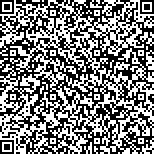下载中心
优秀审稿专家
优秀论文
相关链接
摘要

空气污染作为一种重要的环境问题,直接影响人们的日常生活和身体健康。随着污染气体和颗粒物观测技术的逐步成熟,基于卫星平台的近地层大气污染物监测得到了快速的发展。本文概括性描述了大气环境关注的污染气体和大气颗粒物的主流遥感方法,对各方法的适用场景及优缺点进行了评述。尽管差分吸收光谱方法对污染气体的监测十分有效,但最优估计算法可进一步从多光谱信息中提取部分污染气体(例如:臭氧O3、一氧化碳CO等)的分层信息,有助于更细致地刻画污染气体在整层大气中的垂直分布。对于大气颗粒物遥感方法,采用不同的技术手段进行地气解耦是算法的核心问题,增加光谱、角度、偏振以及时间序列信息都可有效增加算法的地气解耦能力。基于对污染气体和大气颗粒物反演算法的总结,从污染气体和颗粒物协同观测的角度对卫星平台及传感器的发展历程进行了梳理,论述了紫外、红外以及可见光波段的传感器协同观测的优势,展望了未来静止卫星星座的高时空分辨率大气污染监测能力以及中国卫星的贡献。还探讨了以近地面大气污染物监测卫星探测技术及遥感算法亟待解决的问题以及未来的可能发展方向。
Air pollution, as important environmental problem, directly affects daily life and physical health of public. The gradual maturity of polluted gas and particulate matter observation technology has rapidly developed the monitoring of air pollutants near the surface based on satellite platforms. This study aims to clarify the collaborative observation’s history for aerosols and gases and then provide a reference for future satellite platform design.In this study, the popular remote sensing methods for trace gases and atmospheric particulates that are concerned on atmospheric environment are first described, and the applicable scenarios, advantages, and disadvantages of each method are discussed. Next, satellite platforms for collaborative observations of trace gases and aerosols are reviewed. According to the characteristics of remote sensing principle for the trace gases, the satellite platform is divided into ultraviolet and infrared bands, and the development course of sensors and satellite platforms are discussed and analyzed. Finally, we discuss the issues to be solved urgently by satellite platforms and remote sensing algorithms aiming to monitor air pollutants near the ground, as well as possible future development directions.For various trace gases, the good universal remote sensing methods are differential absorption spectrometry method and optimal estimation algorithm, which can fully utilize the absorption spectrum lines to achieve inversion of gases. The differential absorption spectroscopy method is effective for the monitoring of trace gases. However, the optimized estimation algorithm can further extract the layered information of trace gases from the hyperspectral information, which is helpful for obtaining a more detailed vertical distribution of trace gases in the atmospheric column. The band residual method and linear fitting method have strong pertinence to specific pollutant gases (such as sulfur dioxide). These simplified algorithms also have great advantages and application value. The core issue of the aerosol inversion algorithm is the signal decoupling of ground and atmosphere. Adding the information from spectrum, angle, polarization, and time series can effectively increase the decoupling capabilities. The algorithms derived from these principles include dark target algorithm, deep blue algorithm, empirical orthogonal function algorithm, polarization algorithm, and time series algorithm. Since the launch of NOAA-9 carrying SBUV/2 and AVHRR/2 in 1984, the collaborative detection of polluted gases and particulate matter has begun. Subsequently, Europe, the United States, South Korea, and China have launched satellites carrying advanced sensors, from the polar orbit to geostationary orbit. In the future, FY-4A of China, Geo-kompsat-2b of South Korea, Sentinel-4 of Europe, and TEMPO of the United States can be forming a global geostationary satellite constellation with high spatial resolution and hourly monitoring capability to achieve collaborative monitoring of polluted gases and particulate matter.On the basis of the summary of trace gas and atmospheric aerosol inversion algorithms, the development history of satellite platforms and sensors is combined from the perspective of cooperative observation of gas and particulate matter. The advantages of cooperative observation of sensors in the ultraviolet, visible, and infrared bands are discussed. The high temporal and spatial resolution air pollution monitoring capabilities of the geostationary satellite constellation in the future and the contribution of Chinese satellites are prospected.

